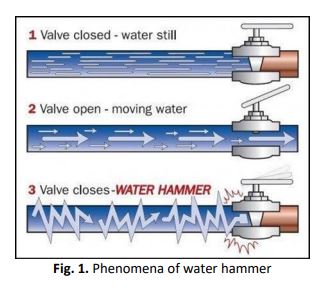Pipeline Fault Identification using Synchrosqueezed Wavelet Transform based on Pressure Transient Analysis
DOI:
https://doi.org/10.37934/arfmts.96.2.158171Keywords:
Pressure transient, leak, non-revenue water, signal reflections, wavelet transformAbstract
Brand modern technology of leak detection by using pressure transient analysis has been developed and interested to research due to its advantages such as low cost, simplicity and convenient to use. This technology uses the concept of signal reflections which identify pipeline features. The method used in this study was using a pressure transducer (piezoelectric pressure sensor) to obtain pressure transient respond generated by rapid opening and closing of solenoid valve. However, such reflections are very difficult to determine the pipe characteristic most probably because of excessive noise from other sources. Therefore, this paper proposed a method called Empirical Mode Decomposition (EMD) to decompose the reflection signal to its Intrinsic Mode Function (IMFs) and further analysis using continuous wavelet transform (CWT) to transform the signal into Time-Frequency domain and spectrum diagram. From the spectrum diagram, the characteristic of the pipe can be clearly display. From the finding results, it proves that this method not only useful for leak detection but also can determine the location of leak and its magnitude with error less than 10%.
Downloads

































